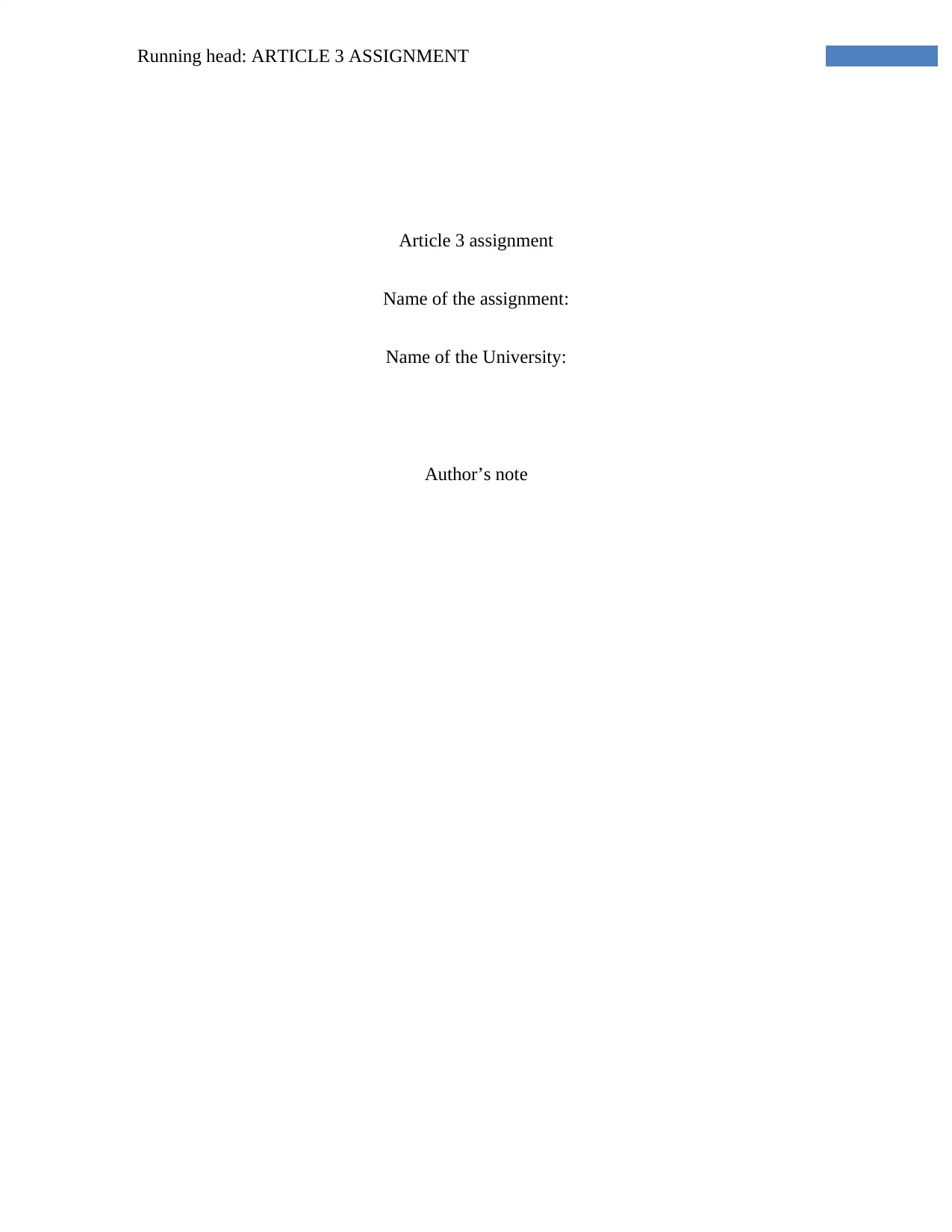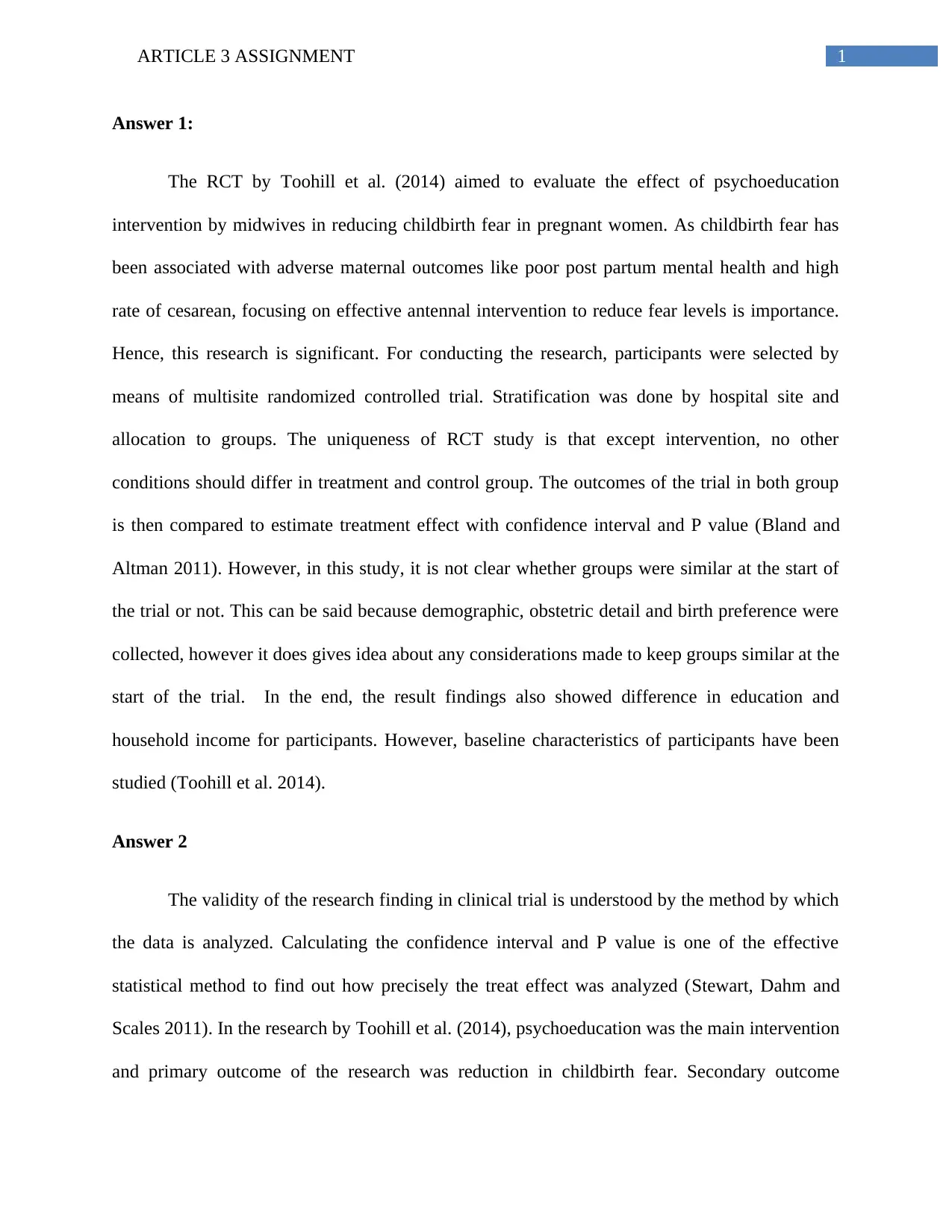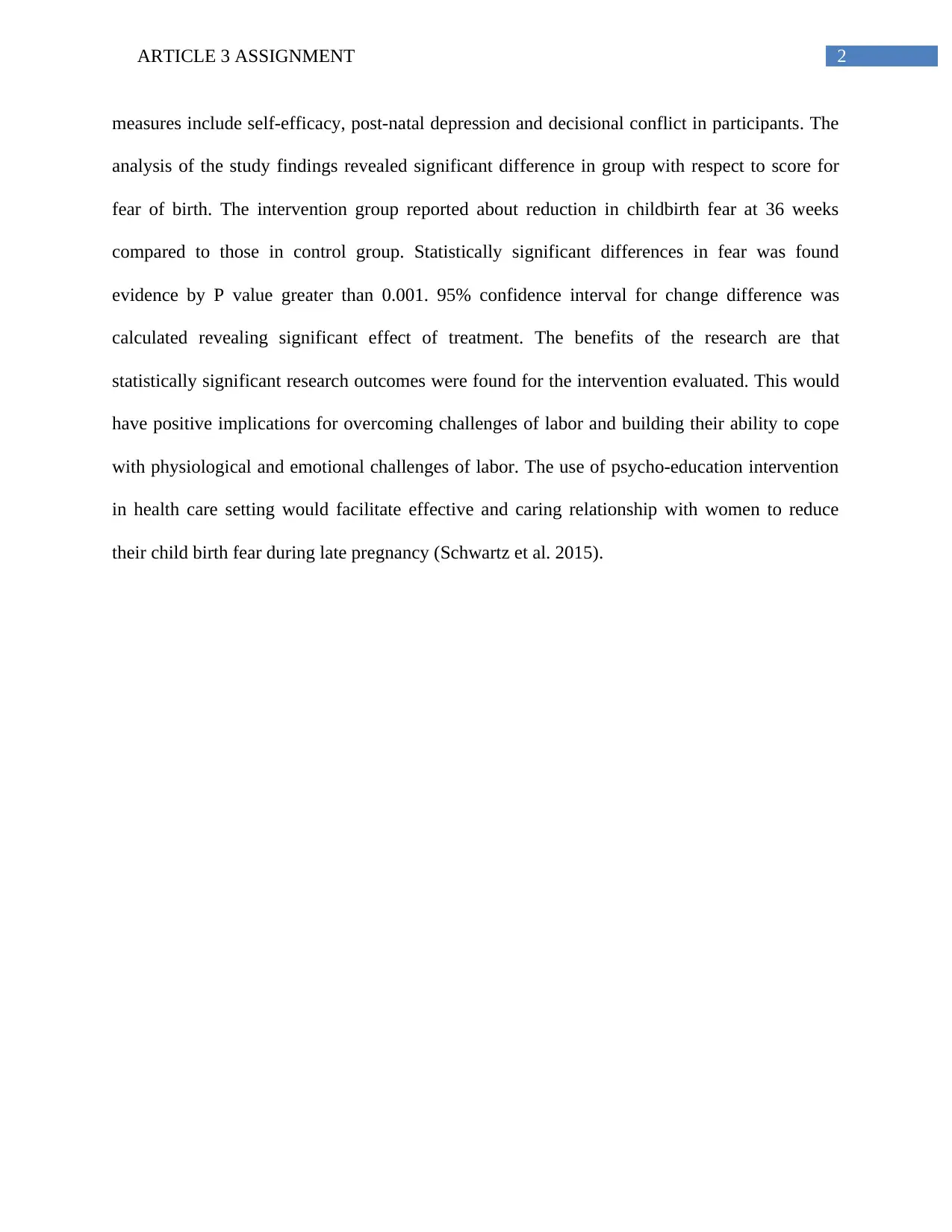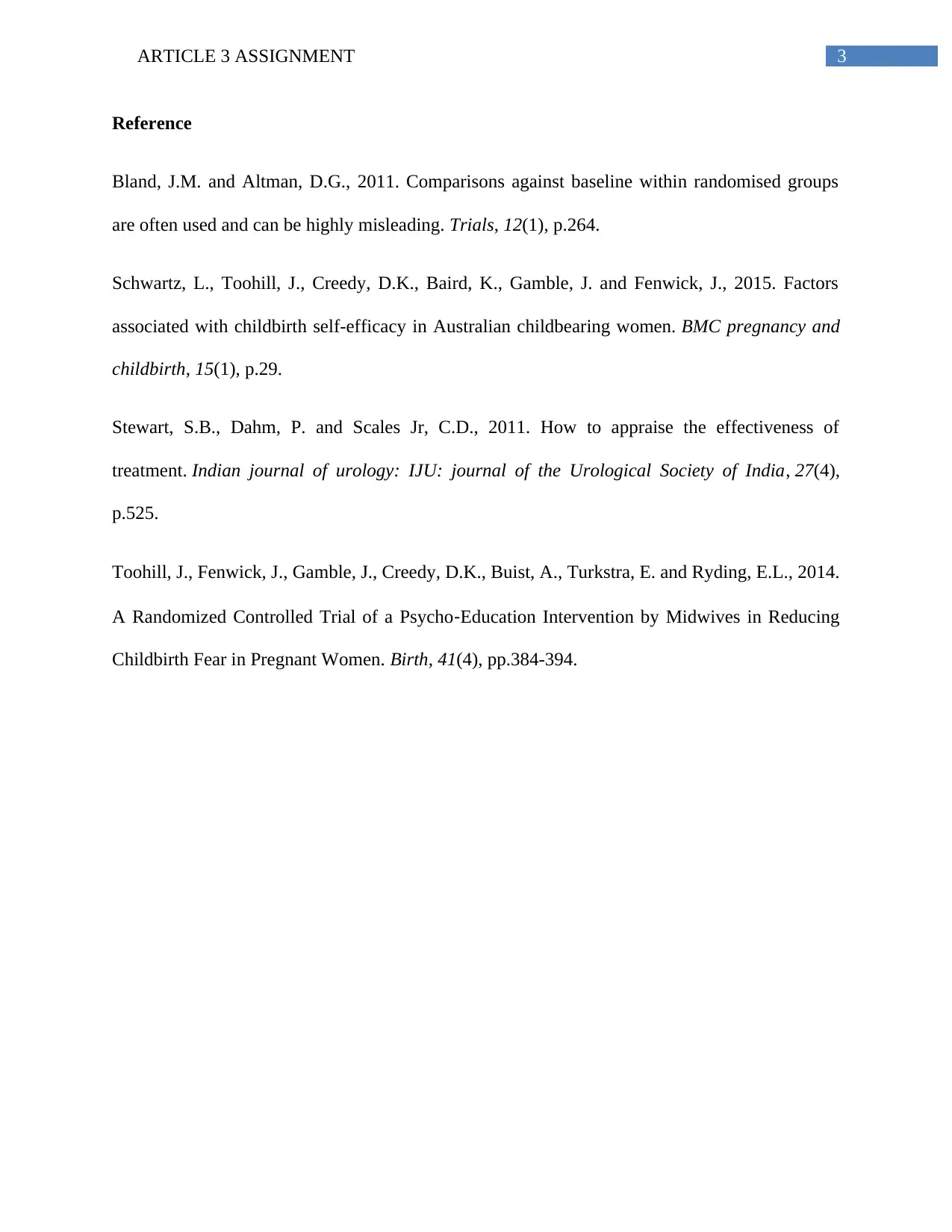Article 3 Assignment: Analysis of a Randomized Controlled Trial
VerifiedAdded on 2020/04/15
|5
|700
|45
Homework Assignment
AI Summary
This assignment analyzes a research article, focusing on a randomized controlled trial (RCT) conducted by Toohill et al. (2014), which investigated the impact of a psychoeducation intervention by midwives on reducing childbirth fear in pregnant women. The assignment delves into the study's methodology, highlighting the use of a multi-site randomized controlled trial and the importance of controlling for variables to ensure the validity of the results. It examines the statistical analysis, including the calculation of confidence intervals and p-values, to determine the effectiveness of the intervention. The findings revealed a statistically significant reduction in childbirth fear in the intervention group. The assignment emphasizes the positive implications of the research, such as improving labor outcomes and fostering effective patient-provider relationships. The assignment also provides a critical evaluation of the study design and the significance of the findings within the context of maternal health and midwifery practices. This assignment is available on Desklib, a platform offering a wide array of AI-powered study tools and resources for students.
1 out of 5












![[object Object]](/_next/static/media/star-bottom.7253800d.svg)